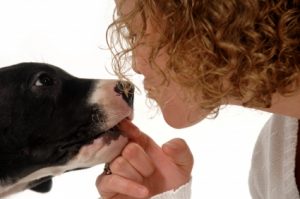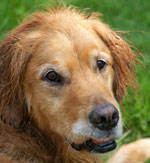Reading Your Pets’ Thoughts. Of course, dogs and cats cannot speak for themselves, they can only bark and howl, purr and hiss.
“The Secret Life of Pets” did very well at the box office by showing what dogs and cats really think, at least the animated kind with human voices.
Of course, dogs and cats cannot speak for themselves, they can only bark and howl, purr and hiss.

Dog Moods and Body Language
Still, it it not hard to know what your pets are thinking if you pay attention to their body language, say experts. And that can be very important in protecting the well-being of you and your family.
According the government’s Centers for Disease Control and Prevention (CDC), there are about 4.5-M dog bites in the US every year. Cat bite estimates run about 400,000 annually, a high percentage of the victims are children.
“Children should be taught how to approach and handle pets, read their warning signs, and avoid high-risk situations,” suggests the Harvard Health Letter.
Here is what experts say you need to know and share with your loved ones about how to read your pets thoughts, moods, and temperament, as follows:
Dogs
“Any single element of a dog’s behavior has to be considered as a piece of a bigger picture,” Dr. Lore Haug, a board certified veterinary behaviorist, says.
“The actions of a dog’s ears, nose, tail and body are like words, and you might not know what they mean until you put them all together in the context of a sentence.”
While you want to consider the entire body language the dog is “speaking,” below are what some of the individual elements can signify:
- Yawning: Like humans, dogs yawn for different reasons. They may be tired. “But it could also indicate a stressful situation,” Dr, Haug adds. “Licking lips is another a sign of nervousness, and when a dog gets scared, you need to worry about aggression.”
- Tail wagging: “Dogs wag their tails in different circumstances, and it’s not always friendly,” warns Dr. Haug. “Big side-to-side or looping wags are typically good.” But if the tail is stiff and the wag does not involved the back end of the dog, it’s likely feeling tense.
- Ears: If a dog’s ears are pulled back, Hr Haug says that’s a sign of fearfulness, submission, or aggression.
- Rolling onto back: People often think that when a dog exposes its underside, it wants a belly rub. “Sometimes that’s the case,” says Dr. Haug. “But it’s commonly a sign of passive submission related to fear. Do not pet them because they are feeling threatened.”
- Eye contact: “Dogs tend to avoid eye contact when they get nervous,” notes Dr. Haug. “They’re trying to tell you they do not want to interact with you. Soft eye contact, as opposed to glaring, is great because it means they are comfortable with you.”
Cats
“It’s important for people to know that the mannerism of cats and dogs can mean completely different things,” cat behavior specialist Marilyn Krieger says.
- Wagging tail: “Cats communicate with their tails, and when they are wagging it back and forth, that’s not a happy thing,” says Ms. Krieger. “It means they are upset, so don’t touch them.” When a cat is happy, it will often hold its tail up high.
- Purring: Usually, a purring cat is content. But cats also purr when they are sick or in pain. And there appears to be a biological reason behind it. Studies show that the frequency of purring can improve bone density and promote healing.
- Arched back: This means that the cat is frightened of something and trying to make itself look bigger.
- Exposing belly: Unlike dogs, when a cat rolls on its back, it is usually feeling secure and wants its belly rubbed, says Ms. Krieger. “Be aware. In that position, all their weapons are on display and ready to be deployed. If something startles the cat, its 1st instinct is to grab onto you, and you could get scratched,” she says.
- Scratching: “There is a reason for this,” says Ms. Krieger. “It’s not just to be bad and ruin your furniture.” Cats have glands on their paws and scratch to mark their territory. “They also scratch when they are feeling stressed and conflicted,” she adds. “It’s a natural behavior and you need to provide posts.”
- Bringing home dead animals: Many people think their kitty is giving them a present, but Ms. Krieger believes it is more a case of them bringing their kill into familiar territory so they can dine in peace.
So, you see it is not hard to know what your precious pals are thinking if you pay attention to their body language, that can be very important in protecting the well-being of you and your family.
Author: Paul Ebeling
Source: Live Trading News










